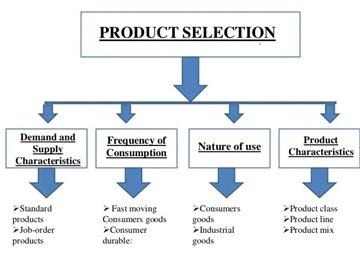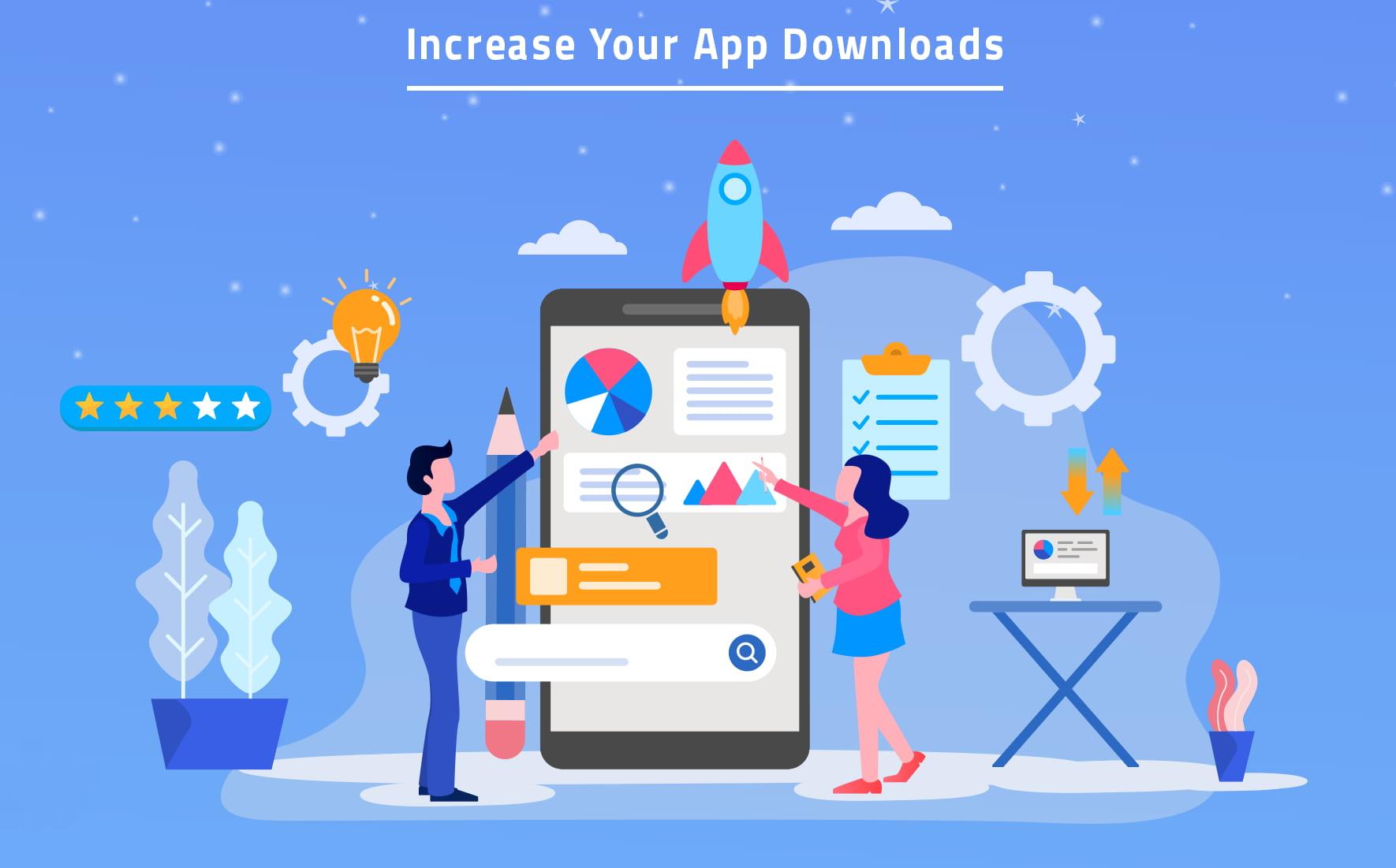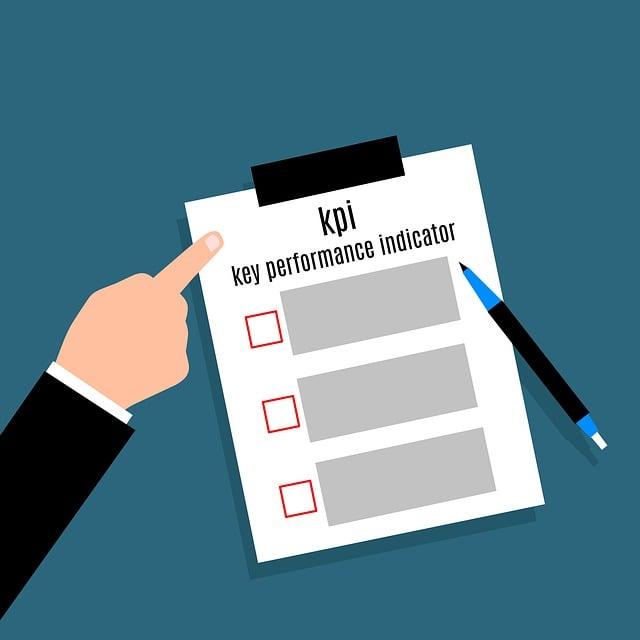How to Become Rich Using Shopify: Your Path to Financial Freedom
Have you ever dreamed of breaking free from the 9-to-5 grind and building a business that fuels your passion while lining your pockets? If so,then you’re in the right place! In today’s digital age,the opportunities for creating wealth are more accessible than ever—especially with platforms like Shopify,which have revolutionized the way we think about e-commerce.Whether you’re a seasoned entrepreneur or just starting out, Shopify provides the tools and resources to turn your ideas into a thriving online store.
But let’s be real: it’s not just about setting up a website and hoping for the best. To truly harness the power of Shopify and achieve the financial success you desire, you need a game plan. In this article, we’ll walk you through actionable strategies, insider tips, and proven techniques to elevate your Shopify store from a simple side hustle to a lucrative business. So grab your favorite beverage, get comfy, and let’s dive into the exciting journey of becoming rich through Shopify! Your dreams of financial independence are just a few clicks away!
Exploring the Shopify Goldmine for Aspiring Entrepreneurs
For aspiring entrepreneurs, Shopify is not just a platform; it’s a treasure trove of opportunities waiting to be mined. With its user-friendly interface and robust features, anyone can set up an online store and start selling products within hours.The real question is, how can you turn this platform into a lucrative venture? Here are several strategies that can pave your way to success.
Identify a Niche Market
Finding the right niche is crucial for standing out in the crowded e-commerce world. Explore areas that you are passionate about or have expertise in. Consider these factors:
- Demand: Research trending products using tools like Google Trends.
- Competition: Analyze competitors to find gaps in their offerings.
- Target Audience: Understand who your ideal customers are.
Leverage Effective Marketing Strategies
Once you’ve set up your store, it’s time to drive traffic. Here are some marketing strategies to consider:
- SEO Optimization: Optimize your product descriptions and blog content to appear in search results.
- Social Media Advertising: Utilize platforms like Instagram and Facebook to reach potential customers with targeted ads.
- email Marketing: Build an email list and engage customers with newsletters and promotions.
Utilize High-quality Visuals
In e-commerce, visuals are everything. Invest in high-quality images and videos to showcase your products.Consider the following:
- Professional Photography: Hire a photographer or use good lighting to enhance product images.
- Videos: Create short videos demonstrating product usage or customer testimonials.
Focus on Customer Experience
Building a loyal customer base is essential for long-term success. Offer an extraordinary shopping experience through:
- Responsive Customer Service: Be available to answer queries and resolve issues promptly.
- User-Friendly Navigation: Ensure your website is easy to navigate,with a seamless checkout process.
- Personalization: Tailor recommendations based on customer preferences.
Monitor Analytics and Adapt
Track your store’s performance through Shopify Analytics. Pay attention to:
- Sales Trends: Identify which products are performing well.
- Customer Behavior: Understand how visitors interact with your site.
- Conversion Rates: Optimize areas were customers drop off in the purchasing process.
Using this treasure map of strategies, you can navigate the Shopify goldmine effectively. By focusing on delivering value,optimizing your operations,and being adaptable to market changes,you can turn your entrepreneurial dreams into a thriving reality.
Understanding the Basics of Shopify: Your First step to Wealth
starting your journey into e-commerce can feel overwhelming, but understanding the fundamentals of Shopify will set you on the right path toward financial success.Shopify is more than just a platform; it’s a complete ecosystem designed to help you build, launch, and scale your online store with ease.
One of the first things to grasp is how user-friendly Shopify is. You don’t need a degree in computer science to create a stunning online storefront. With its intuitive drag-and-drop interface, even those with minimal tech skills can set up shop in no time. Here are some key features that make Shopify stand out:
- Customizable Templates: Choose from a wide range of themes tailored to various niches.
- Mobile Optimization: Ensure your store looks great on any device, capturing sales from customers on the go.
- Integrated Payment Options: simplify the checkout process with multiple payment gateways.
- 24/7 Customer Support: Have peace of mind knowing help is available when you need it.
Another vital aspect is understanding how to leverage Shopify’s powerful marketing tools.Once you have your store set up, you’ll want to attract visitors and convert them into paying customers. Here are a few strategies to consider:
- SEO Optimization: Use Shopify’s built-in SEO features to improve your store’s visibility on search engines.
- Email Marketing: Build an email list and engage with your customers through targeted campaigns.
- Social Media Integration: Connect your store with platforms like Facebook and Instagram for wider reach.
Managing your inventory and understanding your analytics are also crucial components of running a successful Shopify store. Regularly monitor your dashboard to keep track of sales, customer behavior, and traffic sources. This data will help you make informed decisions to optimize your strategies continually. Consider using Shopify’s reports and analytics features to dive deeper into your store’s performance.
don’t underestimate the power of community. Joining shopify forums, attending webinars, and connecting with other entrepreneurs can provide invaluable insights and support. Share experiences and learn from others who are also building their wealth through e-commerce.
| Benefits of Using Shopify | Impact on Your Business |
|---|---|
| Ease of Use | Fast setup, less technical hassle |
| Customization | Unique brand identity |
| Complete Support | Reduced downtime, increased productivity |
| Scalability | Growth potential without major changes |
Embracing these basics will ensure you’re not just another online store but a thriving e-commerce business ready to expand your wealth. As you dive into Shopify, remember that persistence is key; the journey might potentially be challenging, but the rewards can be life-changing.
Choosing the Right Niche: Find Your Lucrative Market
Embarking on your Shopify journey is an exciting adventure, but the first step is crucial—selecting the right niche. the niche you choose can make or break your business,so it’s essential to identify a market that not onyl interests you but is also lucrative. Here are some strategies to help you uncover that goldmine.
Start by exploring your personal passions and interests. A niche that aligns with your hobbies or expertise can not only make the work more enjoyable but also give you a competitive edge. Consider the following:
- What do you love? Reflect on activities that excite you or hobbies you are passionate about.
- What are your skills? Assess your unique talents or experiences that could translate into a business.
- What problems can you solve? think about challenges you’ve faced and how your solutions could help others.
Once you’ve pinpointed potential niches, dive deep into market research. Understanding your target audience is key to ensuring demand for your products. Use tools like Google Trends, social media insights, and keyword research to gauge what people are searching for.Consider creating a simple table to visualize your findings:
| Niche | Search Interest | Competitors |
|---|---|---|
| eco-friendly Products | High | Medium |
| Fitness Equipment | Medium | High |
| Home Office Supplies | Growing | Low |
While it’s essential to identify a profitable niche, don’t overlook the importance of competition. A niche with high demand but overwhelming competition may prove challenging. Look for areas that strike a balance—a niche with moderate competition can offer the perfect launching pad.
Test your chosen niche with a minimum viable product (MVP). Launch a small collection of products and gauge customer feedback. This approach allows you to adjust your offerings based on real-world data, ensuring you’re meeting customer needs effectively.Collect insights on:
- Product preferences: Which items are getting more attention?
- Customer feedback: What are buyers saying?
- Sales data: Which products are performing best?
consider the long-term potential of your niche. Trends change, and what’s hot today may not be tomorrow. look for niches that have a timeless appeal or the capacity for growth. By strategically selecting your niche,you’ll set yourself up for sustained success on Shopify and pave the way to financial independence.

Crafting a compelling brand: Stand Out in a Crowded Marketplace
In today’s digital age, having a distinctive brand is not just a luxury; it’s a necessity. With countless competitors vying for attention in the online marketplace, creating a memorable identity can set your Shopify store apart. here are some essential strategies to consider:
- Define Your Unique Selling Proposition (USP): Understand what makes your products different from others. Whether it’s quality, price, or a specific feature, make sure your audience knows why they should choose you.
- Craft a Compelling Brand Story: People love stories. Share the inspiration behind your brand, your journey, and your values.This not only humanizes your business but also fosters a deeper connection with your customers.
- Invest in High-quality Visuals: First impressions matter. Use professional photography and consistent branding elements, such as colors and fonts, to create a cohesive look across your website and social media platforms.
- Engage with Your Audience: Utilize social media to interact with customers. Respond to comments, ask for feedback, and create polls. The more engaged your audience feels, the more likely they are to become loyal customers.
Moreover, leveraging customer testimonials can also amplify your brand’s credibility. Consider incorporating a dedicated section on your website that showcases real feedback from satisfied customers. This not only builds trust but can substantially influence potential buyers’ decisions.
| Brand Element | Importance |
|---|---|
| Logo | First point of recognition for customers |
| Color Palette | Sets the emotional tone of the brand |
| Tagline | Communicates your essence succinctly |
| Voice & Tone | Establishes personality and rapport with customers |
never underestimate the power of consistent messaging. Ensure that your brand voice echoes across all channels—be it emails, product descriptions, or social media posts. Consistency helps solidify your brand identity, making it easier for customers to recognize and remember you.

Mastering Product Selection: What to Sell for Maximum Profit
When it comes to achieving financial success through your shopify store,the cornerstone lies in product selection. The right products can make all the difference, turning a simple online shop into a lucrative business. Here’s how to identify which products to sell for maximum profit.
First, it’s essential to conduct thorough market research. Understanding current market trends can provide insights into what consumers are looking for. Utilize tools like Google Trends, social media platforms, and e-commerce analytics to gather data. Some effective strategies include:
- Monitoring trending hashtags on social media.
- Exploring popular products on platforms like Amazon and eBay.
- Joining online forums and communities to gauge consumer interests.
Another key factor is identifying your target audience. Knowing who your customers are will guide you in selecting products that cater to their needs and preferences.Create customer personas to visualize their demographics, interests, and buying behaviors.This understanding can help you tailor your product offerings and marketing strategies effectively.
Don’t underestimate the power of niche markets. While it may be tempting to sell widely popular products, focusing on a specific niche can lead to less competition and higher profit margins. Research potential gaps in the market where demand exceeds supply. Some profitable niches include:
- Eco-friendly products.
- Customized or personalized items.
- Health and wellness goods.
Also, consider the cost and pricing strategy for your products. Calculate the cost of goods sold (COGS), shipping, and marketing before setting your prices. It’s crucial to maintain a balance between competitive pricing and healthy profit margins. Here’s a simple table to keep track of these costs:
| item | Cost Price | Shipping Cost | Suggested Retail price | Profit Margin (%) |
|---|---|---|---|---|
| Eco-friendly Bottle | $5.00 | $1.00 | $15.00 | 66.67% |
| Personalized Mug | $4.00 | $1.00 | $12.00 | 58.33% |
| Yoga Mat | $10.00 | $2.00 | $30.00 | 60.00% |
Lastly, don’t forget the importance of testing your products before fully committing. Utilize dropshipping or pre-order strategies to gauge interest without a important upfront investment. This allows you to pivot your offerings based on what sells best, ensuring you’re always aligned with customer demands.
By following these strategies, you can master the art of product selection, setting yourself on the path to profitability and success with your shopify store.

Setting Up Your Store: Tips for a Seamless user Experience
Creating an inviting and efficient online store is crucial for retaining customers and boosting sales. When setting up your Shopify store, attention to detail can significantly enhance the user experience. Here are some essential tips to ensure your store runs smoothly and keeps customers coming back.
- Choose a Clean Theme: Opt for a theme that reflects your brand while ensuring it is indeed user-friendly. A clean and straightforward design helps customers navigate easily, which can lead to higher conversion rates.
- Optimize for Mobile: With a large number of transactions happening on mobile devices, ensure your store is responsive. A mobile-optimized site ensures that customers have a seamless shopping experience irrespective of the device they use.
- Utilize High-Quality Images: Invest in professional product photography. high-quality images can make a significant difference in how customers perceive your products, evoking trust and encouraging purchases.
- Simplify Navigation: Organize products into clear categories and subcategories. A well-structured menu helps customers find what they’re looking for quickly, which enhances their shopping experience.
Another critically important aspect is the checkout process. An efficient checkout can make or break a sale. Aim to:
- Enable Guest Checkout: Allow customers to make purchases without creating an account.This reduces friction and can significantly decrease cart abandonment rates.
- Offer Multiple Payment Options: Provide various payment methods such as credit cards, PayPal, and digital wallets to cater to different preferences.
- Ensure Security: Display trust badges and SSL certificates. Reassuring customers that their information is secure encourages them to complete their purchases.
Lastly, consider personalizing the shopping experience. Using customer data, you can:
- Offer Product Recommendations: Tailor suggestions based on previous purchases or browsing history to enhance customer engagement.
- Implement Exit-intent Popups: Capture potential losses by offering discounts or incentives to users who are about to leave the site.
- Use Email Follow-Ups: Send follow-up emails to customers who abandon their carts,potentially converting lost sales into completed transactions.
By focusing on these elements, you can create a Shopify store that not only attracts customers but also provides them with a seamless shopping experience. Remember, happy customers are the key to a successful business.

Optimizing Your Store for Search engines: Drive Organic Traffic
To effectively attract organic traffic to your Shopify store, you need to think like your potential customers. What keywords would they use to find your products? Start by conducting thorough keyword research using tools like Google Keyword Planner or Ubersuggest. Identify terms with high search volume but low competition. These targeted keywords will serve as the backbone of your content strategy.
Once you’ve pinpointed your keywords, it’s time to optimize your product pages. Here are some essential elements to focus on:
- Product Titles: Include primary keywords naturally in your product titles.
- Meta Descriptions: Craft compelling meta descriptions that encourage clicks and incorporate your keywords.
- Image alt Text: add descriptive alt text to your images using relevant keywords to improve visibility in image search results.
Additionally, consider creating a blog section on your Shopify store.This can serve as a powerful tool for driving organic traffic. By regularly publishing informative and engaging content related to your niche, you not only establish authority but also enhance the chances of ranking for a wider variety of keywords. Aim for a mix of how-to guides, product comparisons, and industry news to keep your content fresh and engaging.
another effective strategy is to leverage internal linking. When creating new content, link back to relevant product pages or other blog posts within your website. This not only improves user experience by guiding visitors to related content but also helps search engines understand the structure and relevance of your site.
Don’t forget about mobile optimization. With a significant amount of online shopping occurring on mobile devices, ensure your store is responsive and loads quickly. Use tools like Google PageSpeed Insights to check your site’s performance and make necessary adjustments.
consider building backlinks to increase your site’s authority. Reach out to influencers, bloggers, and complementary businesses for guest posting opportunities or collaborations. Quality backlinks can significantly boost your search engine rankings, ultimately driving more traffic to your store.
| Strategy | Description |
|---|---|
| Keyword Research | Identify high-volume, low-competition keywords. |
| SEO Optimization | Optimize titles, descriptions, and images with relevant keywords. |
| Content Creation | Develop a blog to engage visitors and rank for more keywords. |
| Internal Linking | Link related content to improve navigation and SEO. |
| Mobile Optimization | Ensure the store is responsive and fast on all devices. |
| Backlink Building | Collaborate for guest posts and backlinks to enhance authority. |

Leveraging Social Media Marketing: Engage and Convert Customers
Social media has transformed the way businesses connect with their customers, and for Shopify entrepreneurs, this means a golden prospect to engage and convert. By utilizing the right strategies, you can turn casual browsers into loyal buyers, enhancing your sales funnel and ultimately your profit margins.
First and foremost, know your audience. It’s essential to understand who your customers are and what platforms they frequent. Tailor your content to resonate with them. Consider these platforms:
- Facebook: Great for broader audiences and targeted ads.
- Instagram: Perfect for visual storytelling and product showcases.
- Twitter: Effective for real-time engagement and customer feedback.
Next, focus on creating engaging content. This can be done through a mix of entertaining, informative, and promotional posts. Use high-quality images,engaging videos,and compelling captions to capture attention. Here are some content ideas:
- Behind-the-scenes looks at your business.
- User-generated content showcasing your products.
- Educational posts that provide value to your followers.
Don’t forget to leverage influencer marketing. Collaborating with influencers who align with your brand can extend your reach and credibility. Create campaigns where influencers showcase your products and offer exclusive discount codes to their followers. This not only drives traffic but also builds trust.
Lastly, analyze and adjust your strategy.Use analytics tools provided by social media platforms to track engagement and conversion rates. Understanding what works and what doesn’t allows you to refine your approach continuously.Below is a simple table to help track your key performance metrics:
| Metric | Target | Current Value | Action Needed |
|---|---|---|---|
| Engagement Rate | 5% | 4% | Increase content frequency |
| Conversion Rate | 3% | 2.5% | optimize landing pages |
| Follower Growth | 10% per month | 7% | Run a giveaway |
By effectively leveraging social media marketing, you can create a vibrant community around your Shopify store, drive traffic, and ultimately convert your followers into paying customers.The right strategy can lead to significant financial gains, making your path to wealth through Shopify not just a dream, but a tangible reality.

Utilizing Email Marketing: Build Relationships and Boost Sales
Email marketing is more than just sending promotional messages; it’s about creating a connection with your audience. When done right, it can transform your Shopify store into a thriving business. Here’s how you can leverage email marketing to build meaningful relationships and increase your sales.
First and foremost, target your audience. Segment your email lists based on customer behavior, preferences, and past purchases. This allows you to send personalized content that resonates with your subscribers. Tailored emails not only improve engagement but also encourage repeat purchases. Consider these segmentation strategies:
- Purchase history
- Browsing behavior
- Geographic location
- Engagement level with previous emails
Next, focus on crafting captivating subject lines. Your subject line is the first impression, and it sets the tone for your message. make it enticing and relevant to encourage open rates. Here are a few tips for effective subject lines:
- Use action-oriented language
- Incorporate urgency or exclusivity
- Ask a question to pique curiosity
In addition to engaging content, make your emails visually appealing. Use clean layouts and high-quality images that reflect your brand’s identity.A well-designed email can significantly enhance user experience and compel readers to take action. Consider using a simple table to organize information or highlight special offers:
| Offer Type | Details | Expiration Date |
|---|---|---|
| Discount Code | 20% off on first purchase | 12/31/2023 |
| Free Shipping | On orders over $50 | Ongoing |
| Buy One Get One | On selected items | 01/15/2024 |
don’t forget to analyze your results. Use analytics tools to track open rates, click-through rates, and conversion rates. This data will help you understand what resonates with your audience and refine your email marketing strategy over time. Implement A/B testing on different elements of your emails, such as subject lines or content formats, to determine what drives the best results.
By effectively utilizing email marketing, you can foster loyalty among your customers and drive higher sales. Remember, the goal is to create valuable content that enriches the customer experience while concurrently promoting your Shopify store. Make every email count!
Implementing Effective Pricing Strategies: Maximize Your Revenue
To truly unlock the potential of your Shopify store, understanding and implementing the right pricing strategies can make all the difference in your journey to wealth. Pricing isn’t just about numbers; it’s a strategic tool that can influence customer behavior, enhance perceived value, and ultimately drive sales. Here are some effective strategies that can help you maximize your revenue:
- Value-Based Pricing: Focus on what your customers perceive as valuable. Adjust your prices based on the value your product offers rather than solely on production or market costs. This method allows you to capture more consumer surplus and increases profitability.
- Dynamic Pricing: Use algorithms to adjust prices in real-time based on demand, competition, and other market factors.This strategy is especially effective in e-commerce, where prices can fluctuate based on consumer behavior.
- Psychological Pricing: Leverage pricing techniques such as charm pricing (e.g., $19.99 instead of $20) to create a perception of a better deal. Small adjustments can impact how consumers perceive your pricing and encourage them to purchase.
- Bundle Pricing: Encourage larger purchases by offering products in bundles at a discounted rate. This not only increases the average order value but also helps clear out slower-moving inventory.
- Subscription Models: Consider implementing a subscription service for your products. It provides predictable revenue streams and fosters customer loyalty, making it a win-win for both parties.
Understanding your target audience is key in determining the best pricing strategy. Conducting thorough market research to gauge customer preferences,spending habits,and willingness to pay can yield invaluable insights. Furthermore, always keep an eye on competitors.Tools like price monitoring can help you stay competitive while ensuring you’re not undervaluing your offerings.
Here’s a quick comparison of different pricing strategies you might consider:
| Pricing Strategy | Pros | Cons |
|---|---|---|
| Value-Based Pricing | Maximizes profit; aligns with customer needs | Requires deep market understanding |
| Dynamic Pricing | Optimizes revenue; responsive to market | Can alienate customers if perceived as unfair |
| Psychological pricing | Drives impulse purchasing | May not work for high-end products |
| Bundle Pricing | Increases average order value | Potentially less perceived value for individual items |
| Subscription Models | Steady income; builds loyalty | Requires ongoing value delivery |
never underestimate the power of testing. A/B test different pricing strategies to see what resonates best with your audience. tweak your approach based on customer feedback and sales data to find the perfect balance. Remember, effective pricing is not static; it evolves with market trends and consumer behavior.

Analyzing Your Performance: Tools and Metrics for success
Understanding your performance on Shopify is crucial if you want to reach your financial goals. By leveraging the right tools and metrics, you can gain insights that help refine your strategies and maximize your profits. Here’s how you can effectively analyze your business performance:
Start by utilizing Shopify’s built-in analytics. These tools can offer you valuable data on:
- Sales Trends: Evaluate which products are selling well and during what times.
- Customer Behavior: Understand how customers navigate your store, from landing to checkout.
- Traffic sources: Identify where your visitors are coming from—whether through social media, ads, or organic search.
Next, consider integrating tools like Google Analytics for a deeper dive into your website’s performance. This powerful tool allows you to track:
- User Engagement: See how long visitors stay on your site and which pages attract the most attention.
- Conversion Rates: Analyze how many visitors are turning into paying customers.
- Demographic information: Gather insights on the age, gender, and location of your audience.
Another key metric to focus on is the Customer Lifetime Value (CLV). this figure represents how much a customer is worth throughout their relationship with your brand. To calculate it, consider:
| Metric | Formula |
|---|---|
| Average Purchase Value | Total revenue / Number of Orders |
| Average Purchase Frequency | Total Orders / Unique Customers |
| Customer Lifetime Value | Average Purchase Value x Average Purchase Frequency x Average Customer Lifespan |
Lastly, don’t underestimate the power of feedback. Engage with your customers through surveys and reviews to gather qualitative data. This feedback can shed light on:
- Product improvement: Identify areas where your offerings might fall short.
- Service Quality: Assess how well your customer service meets expectations.
- Market Trends: Stay ahead of competitors by understanding shifting customer needs.
By consistently monitoring these tools and metrics, you can make informed decisions that propel your Shopify store towards success. The key is to remain agile, adapting your strategies based on real-time data and insights.

Scaling Your Business: Strategies to Grow Beyond Your Initial Success
As your Shopify store starts to gain traction, the next logical step is to scale your business to maximize your potential. Here are some effective strategies to consider:
- Diversify Your Product Line: Expanding your offerings can attract new customers and retain existing ones. Consider conducting market research to identify complementary products that align with your brand.
- Enhance Your Online Presence: Utilize social media platforms and SEO to drive traffic to your store. Regularly engaging with your audience through content can establish your brand as a trusted authority.
- Optimize Your Operations: Streamlining processes can save time and reduce costs. Invest in automation tools for inventory management, customer service, and marketing campaigns.
- Leverage Customer Feedback: Reviews, ratings, and customer surveys can provide insights into areas for improvement. Use this information to enhance your product offerings and customer service.
- Introduce Loyalty Programs: Rewarding repeat customers fosters loyalty and encourages more purchases. Consider implementing a point system or exclusive discounts for returning customers.
Understanding your metrics is crucial for scaling effectively. Here’s a quick overview of important kpis to monitor:
| Metric | Why It Matters |
|---|---|
| Conversion Rate | Indicates how well your site turns visitors into customers. |
| Customer Acquisition Cost | Helps you understand the cost-effectiveness of your marketing efforts. |
| Average Order Value | Allows you to gauge customer spending habits and optimize pricing strategies. |
| Return on Ad Spend (ROAS) | Essential for assessing the effectiveness of your advertising campaigns. |
Additionally, consider forming strategic partnerships. Collaborating with other brands can expand your reach and introduce your products to new audiences. Look for partners who share your values and target audience to create mutually beneficial campaigns.
Lastly, never underestimate the power of networking. Engaging with industry influencers and participating in community events can open doors to growth opportunities. Whether it’s online or offline, building relationships can lead to valuable partnerships and insights that can propel your business forward.
Frequently Asked Questions (FAQ)
Q&A: How to Become Rich Using Shopify?
Q1: What is Shopify, and how can it help me become rich?
A1: Great question! Shopify is an e-commerce platform that allows you to create your own online store without needing to be a tech wizard. It’s user-friendly and packed with tools to help you sell products easily. by starting your own Shopify store, you have the potential to reach a vast audience and generate substantial income, especially if you choose the right products and market them effectively.
Q2: Do I need a lot of money to start a Shopify store?
A2: Not at all! One of the best things about Shopify is that you can start with a modest budget. Shopify offers plans that fit various budgets, and you can begin by dropshipping, which means you don’t need to invest in inventory upfront. As you start making sales, you can reinvest your profits to grow your store!
Q3: What kinds of products should I sell to get rich?
A3: The key is to find a niche that resonates with your target audience. Look for trending products, or consider what you’re passionate about. Tools like Google Trends and social media can definitely help you identify popular items. Remember, unique products that solve a problem or fulfill a need frequently enough attract more buyers!
Q4: How critically important is marketing in becoming successful on Shopify?
A4: Marketing is everything! Even the best products can go unnoticed without the right marketing strategy. Utilize social media platforms, email marketing, and paid ads to get the word out about your store. Building a brand presence online can significantly increase your sales and help you connect with your audience.
Q5: Can I really make a full-time income with Shopify?
A5: Absolutely! Many entrepreneurs have built successful businesses on Shopify, some even achieving six-figure incomes. The key is consistency, effective marketing, and continuously optimizing your store and processes. Treat it like a real business, invest the time and effort, and you could see your income grow dramatically.
Q6: What are some common mistakes to avoid when starting a Shopify store?
A6: Great question! Some common pitfalls include not researching your market thoroughly, neglecting SEO, and failing to engage with your customers. Additionally, avoid underestimating the importance of quality product images and descriptions—these can make or break a sale. Keep learning and adapting, and you’ll set yourself up for success!
Q7: How can I stay motivated on my journey to wealth with Shopify?
A7: Surround yourself with a supportive community of fellow entrepreneurs, whether through forums, social media groups, or local meetups.Set clear goals and celebrate small wins along the way. remember, every successful entrepreneur has faced challenges—stay focused, keep learning, and don’t be afraid to seek help when needed. Your hard work will pay off!
Q8: Any final tips for aspiring Shopify entrepreneurs?
A8: Absolutely! Stay curious and always be willing to adapt. The e-commerce landscape is constantly changing, and what works today might not work tomorrow. Focus on building relationships with your customers and always prioritize their experience. leverage Shopify’s resources and community—there are countless tutorials, webinars, and forums that can guide you on your journey. Happy selling!
To Wrap It Up
becoming rich using Shopify isn’t just a pipe dream; it’s a very achievable goal if you’re willing to put in the work, stay dedicated, and keep learning. Remember, every successful entrepreneur started with a single step, and yours could start today. By leveraging Shopify’s powerful tools and features, you can turn your passion into profit, create a thriving online store, and build a brand that resonates with customers around the globe.So, what are you waiting for? Dive into the world of e-commerce, harness your creativity, and let Shopify be your launchpad to financial freedom. Don’t just dream about wealth; take actionable steps towards it.Your journey to becoming a successful Shopify entrepreneur begins now. Embrace the challenge, stay committed, and watch as your hard work transforms into the riches you’ve always envisioned. Happy selling!

